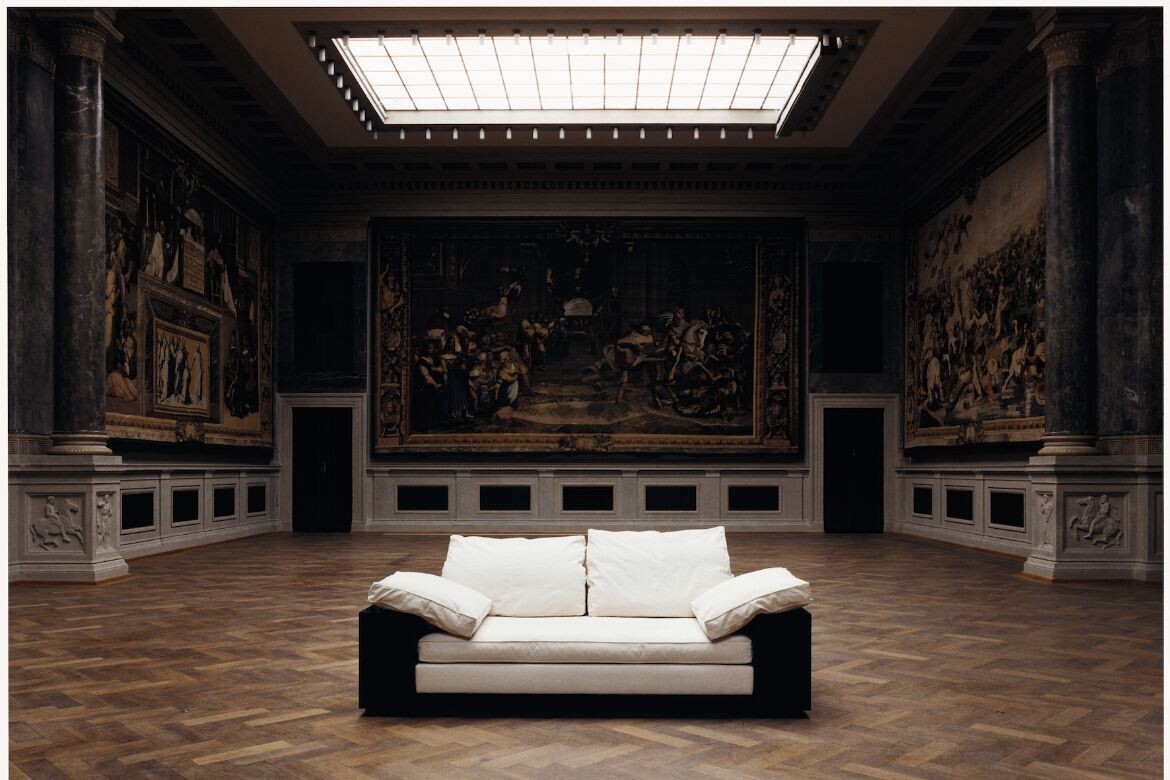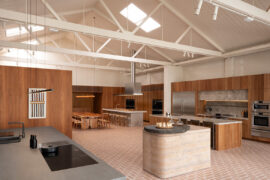Despite designing one of history’s most coveted side tables, Eileen Gray’s popularity faced significant gaps due to the challenges encountered by female designers in the early 20th century.
March 8th, 2024
There is something so unique to an Eileen Gray design that allows them to fit straight into any interior with ease. And despite having designed the most coveted side table of all time, there were huge gaps in her popularity. Indeed, until after her death her furniture designs were only by commission (the price of being a female designer in the early century!).
“[Eileen Gray’s work] was, also, in its day, part of a personal style and philosophy of design which was, by the look of things, too rich for the punditry to take,” as critic Reyner Banham put it. “And if the punditry didn’t publish you, particularly in the great canon-defining compendia of the thirties, forties and fifties, you dropped off the record and ceased to be a part of the universe of scholarly discourse.”

By way of background, her father was an artist and her mother a Baroness, and there is a profusion of gossipy information to say her father changed his last name to Gray after he and Eileen’s mother had divorced. What they usually don’t say is that Eileen was legally styled the Right Honourable, “but never used the title as her politics were pointedly left of the peerage,” as Marisa Bartolucci points out in her Designers to Know article.
That aside, her father was a well-connected artist who encouraged Eileen in her artistic pursuits and took her on painting expeditions to Italy and Switzerland. In 1900 she commenced art studies at the Slade School of Fine Art London under Philip Wilson Steer, Henry Tonks and Frederick Brown. Next came the Academie Colarossi and then Academie Julian, both in Paris.

Very much a part of Paris Bohemia, Grey cropped her hair to a tight bob, wore tailored men’s clothes and was finally at liberty to explore her bisexuality. Returning to London briefly when her mother was ill, she used her time there to apprentice herself to an artisan lacquerer. Returning to Paris in 1909 she learnt how to fly, drive (a rarity for Parisienne women) and travelled to Morocco to learn how to weave. By 1913 she presented a screen at the Salon des Artistes Decorateurs in Paris and was thrown into the limelight when haute couturier and art collector Jacques Doucet purchased her Le Destin screen.
What followed was some commissions of spectacular importance. Some of which have later gained incredible prices at auction. The most infamous was the Dragons Armchair, not to everyone’s taste, but for Yves Saint Laurent it was a key piece in his collection having bought it from Cheska Vallois in the 70’s. Fetching $43million (E19.5m) through Christie’s in 2015, the piece had originally been commissioned in 1917 by society hostess Madame Juliette Mathieu-Levy (milliner and owner of hat brand Suzanne Talbot) as part of the interior design commission for her 16th arrondissement apartment in Paris. Harper’s Bazaar featured the apartment in the 1920 edition proclaiming it “thoroughly modern, although there is much feeling for the antique.”
Related: BLP’s Bettina Bartos on IWD 2024

In this same commission was the Bibendum chair and Pirogue daybed, both of which continue to be go-to pieces of Mid-Century chic. At the time, however, they were only made by commission. Conversely, her abstract geometric rugs, which had also been in the Mathieu-Levy apartment, were immediately popular. Opening a store Jean Desert in Paris in 1922 for her rugs, furnishings and the artworks of her friends, her clients included Ezra Pound and Elsa Schiaparelli. Moreover, the store was a hangout for the ever-glamorous Parisians, from the Vicomtesse de Noailles to James Joyce.
Praise at this time came from influential architects, including Le Corbusier, Robert Mallet-Stevens and the Romanian-born practitioner-turned-critic Jean Badovici. Indeed, when Badovici championed her work and convinced her to turn her talents to architecture; though he was 15 years her junior, she fell madly in love with him.

The most famous of her architectural works is E-1027, a minimalist pavilion in Roquebrune-Cap-Martin on the Southern French Coast. Now open to the public, this house was very much an intimate nest for herself and Babovic, though Corbusier was a regular visitor. Several years after Gray and Babovic separated (Gray gave him the house), Corbusier as a guest of Babovic, painted garish murals on eight of the pristine white walls. Gray was not impressed. There is speculation around why he would do such a thing to her masterpiece, why he bought a small plot to build on nearby and why he died in the sea directly in front of the house, but there is also her response of “A house is not a machine,” to his “It is the shell of man — his extension, his release, his spiritual glow” to fuel the conjecture.
In a list of designs that shift from the sublime to the sublime with only a small incursion to the Dragons, the E-1027 side table is instantly recognisable and remains a delight. Designed so her sister could eat in bed, the open tube at the base fits neatly around a bed leg to deliver the tray to just the right spot. More often seen in living rooms, the elegant tubular form remains a thing of beauty, as do the Bonaparte and Daybed.

The rugs too remain wholly contemporary with elegant compositions of geometric form and colour. But, oh, for a Bibendum! This classic design which takes its name from the French and original Michelin Man, is all things sumptuous, insouciant and glamourous rolled into one.
With a change in tastes and design understanding, the early 1970s saw a small triumph as Gray started to work commercially with Zeev Aram, with her furniture, rugs and lamps going into series production. In 1973, she granted the worldwide rights to manufacture and distribute her designs to Aram Designs.
In 1990 the Vereinigte Werkstätten, from which ClassiCon emerged, was already producing and distributing Gray’s designs under license. Today, ClassiCon is authorised by The World Licence Holder Aram Designs Ltd to manufacture this incredible designer’s work, with Anibou the exclusive Australian retailer.
ClassiCon
classicon.com
Photography
Courtesy ClassiCon and Anibou
Portrait photography
Courtesy National Museum of Ireland



INDESIGN is on instagram
Follow @indesignlive
A searchable and comprehensive guide for specifying leading products and their suppliers
Keep up to date with the latest and greatest from our industry BFF's!

Rising above the new Sydney Metro Gadigal Station on Pitt Street, Investa’s Parkline Place is redefining the office property aesthetic.

For those who appreciate form as much as function, Gaggenau’s latest induction innovation delivers sculpted precision and effortless flexibility, disappearing seamlessly into the surface when not in use.

BLP’s new Sydney Children’s Hospital, Randwick building brings together paediatric care, family-centred design and Australia’s first Children’s Comprehensive Cancer Centre in a major addition to the Randwick Health & Innovation Precinct.

Hecker Guthrie brings a natural, material-led design to Green Cup’s new Chadstone store, pairing pine, steel and glass with a grab-and-go layout inspired by the brand’s fresh, organic ethos.
The internet never sleeps! Here's the stuff you might have missed

Good looks count, but function completes the space.

The Fisher and Paykel Melbourne Experience Centre by Clare Cousins Architects with Fisher and Paykel Design and Alt Group has been awarded The Retail Space at the INDE.Awards 2025. As a winning project, it redefines the possibilities of retail architecture by creating an immersive, material rich environment shaped by place, culture and craft.